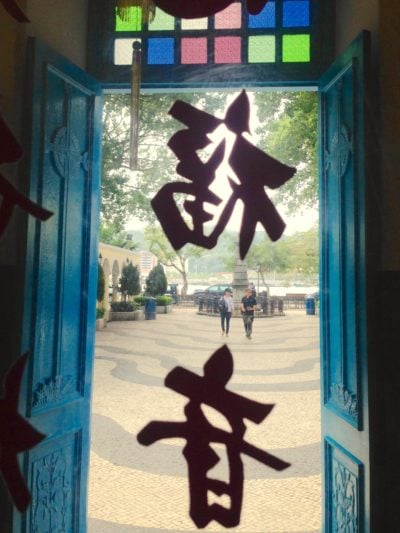
Thanks to its past, Macau has a unique blend of cultures and entertainment options alive here for travelers of all types. Modern-day Macau is much more than just gambling.
There’s rich heritage to explore walking through old Chinese neighborhoods, and ancient ruins, temples, museums and art to see. The cuisine is to die for—Macanese, Portuguese and Chinese. Macau is expanding rapidly with new hotels on the waterfront and inland. The entertainment ranges from kid-friendly shows to sexy burlesque shows. You can even jump off of the world’s highest bungee jump (or if you are like me—have lunch and a glass of wine and watch others jump). And then, of course, you have your share of casinos to gamble your heart away if you are so inclined.
Macau occupies a small peninsula and two islands (Taipa and Coloane) off China’s southern coast. Hong Kong is to the east. With an easy ferry ride from Hong Kong International Airport, you can be to Macau in an hour.
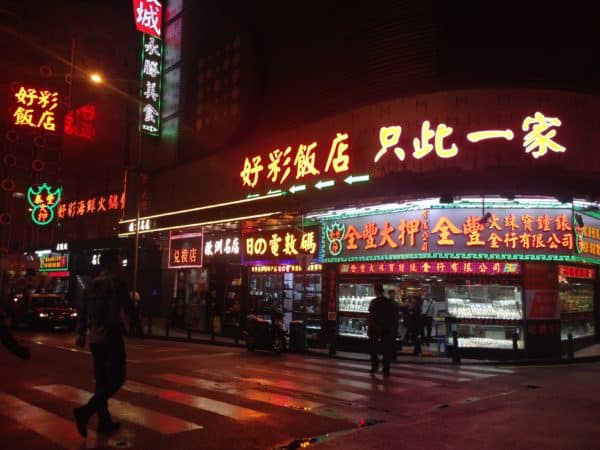
First, a little history
The Portuguese arrived and settled in Macau in the mid-16th century. Initially, the colony benefited from regional trade. Until 1999, Macau was one of Portugal’s last surviving colonies. Macau became a Special Administrative Region of the People’s Republic of China in December 1999. Therefore, Macau was handed back to China under the same “one country, two systems” policy similar to Hong Kong being gifted back to China in 1997.
Under the agreement signed by Portugal and China, Macau has its own money, passports, and legal system and is allowed to run its own affairs. If you want to know more about Macau (and Hong Kong) history, check out a super helpful video and infographic here.
Today the city’s architecture, art, religion, traditions, food, and entertainment reflect the mix of Portuguese (and other Western) and Chinese. Macau is blossoming beyond just gambling into a place with an array of options for the foodie, culture junkie, thrill-seeker, and entertainment-lover alike.
Infrastructure projects currently in the works include an expansion of a high-speed railway linking the mainland to Macau. A bridge to Hong Kong and Zhuhai are also expected to increase traffic.
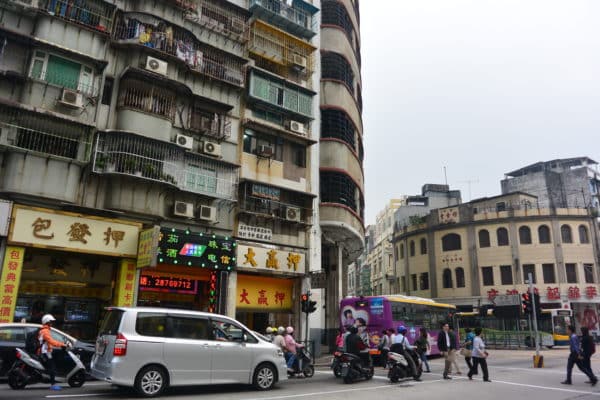
Historic Center of Macau
My most memorable days in Macau were spent learning about Macau’s heritage despite the rain that seemed to pour down mostly while we were walking outside! I actually enjoyed the rain and humidity since my current residence happens to be the lovely Los Angeles. (We only jumped IN the puddles and hid in post offices during the really massive downpours!)
The old Macau historical quarter—the Historic Center of Macau—is a collection of 22 historical buildings and eight urban squares that showcase the city’s historic settlement. During our walk around the city, we saw beautiful architectural gems including streetscapes, major urban squares, temples, and churches. I couldn’t believe how close our hotel, Sofitel Macau, was to all of this heritage! We just walked right out the door to this beautiful, old city. Here are a few of my favorites from our walk:

Senado Square has been Macau’s urban center for centuries and is still the most popular venue for public events. The square is surrounded by beautiful pastel-colored neoclassical buildings. There are many options for shopping as well as for street food and traditional Chinese food around the square. Lion and dragon dances are held here on special days/occasions such as the Chinese Spring Festival and Christmas. It looks like Europe and China just collided together here!

A-Ma Temple consists of four pavilions built on the rocks with incense everywhere and is known to be one of the oldest Taoist temples in Macau. Built in 1488, this temple is dedicated to Matsu, the goddess (and protector) of seafarers and fishermen in the South China Sea. Some say the name “Macau” is derived from this goddess’ name.

On our walk through the main level of the temple, we came across brightly colored red, gold, and pink ornaments with wishes and good fortunes written on them. I tried to read the English ones. They wished for their loved ones to be healthy and others wished for business success.
Tip: A 10-minute walk from A-Ma Temple is a special exhibit from local Macau artist Eugenio Novikoff Sales in the Portuguese Consulate of Macau. His pieces are stunning and the view from the building is just as breathtaking.

Then we bought some incense sticks to burn, and walking all around the temple looking for the right spot to burn three incense sticks turned out to be a special experience. We found the very top of the temple (pictured above) to be the perfect spot.
This temple follows the tradition in south China of burning three incense sticks; one for your loved ones who have passed away, one for those that are lonely and one for the protector of the temple. As a Macanese man explained his tradition and personal stories to me, it all hit very close to home due to a recent event that happened to my family. Even though I was so very far away from home, I smiled at him and teared up in the same breath. I felt welcome here. Not only in this temple but throughout this walk around old Macau.

Today, the Ruins of St. Paul is one of the best-known landmarks of the city and perceived as Macau’s “Acropolis.” The Ruins of St. Paul refer to the facade of what was originally the Church of Mater Dei, built in 1602-1640, and the ruins of St. Paul’s College, which stood adjacent to the church. Both were destroyed by fire in 1835. The Church of Mater Dei is also known as Cathedral of St. Paul, a 17th-century Portuguese cathedral dedicated to the apostle St. Paul.
St. Paul’s College was the first Western-style university in the Far East, with an academic program that included theology, mathematics, geography, Chinese, Portuguese, Latin, and astronomy, and it prepared a significant number of missionaries to pursue Roman Catholic work in China, Japan and throughout the region. The missionary route followed by the Jesuits from Macau all over the region was crucial in the effort to facilitate Catholicism in China, Japan and other countries.
Tip: It is customary to throw coins into the top window of the ruins from the stairs for good luck. (But I didn’t try this for two reasons: one, it was pouring and I had enough trouble holding my massive umbrella, and two, the odds of me having success with this on a sunny day might have even been a bit low.)

Mount Fortress was the city’s military defense structure equipped with cannons, military barracks and ammunition. Cannons were used only once, when the Dutch invaded Macau in 1622. From the fort you can see across the water into China with its concrete jungle of high rises and in Macau you can see some modern apartment towers along with a lot of older low-rises. From other angles, you’re able to see the landmark Hotel Lisboa.
Tip: The Museum of Macau is located under the fortress and was quite fascinating in what it held about the life of Macau and its people over the past four centuries, as well as about the merging of different cultures through festivals, social customs, architecture, sports, art, and cuisine to further develop the Macanese culture. I could only spend about an hour here but I could have spent a couple more.


Moorish Barracks were designed by an Italian in a neoclassical style inspired by Moorish architecture to accommodate an Indian regiment brought from Goa to reinforce the local police force. The building was capable of accommodating more than 200 servicemen, and now is the office building of the Marine and Water Bureau of Macau SAR Government.
The Historic Center of Macau was inscribed on the UNESCO World Heritage list, making it the 31st designated World Heritage site in China. It was described by UNESCO as: “with its historic street, residential, religious and public Portuguese and Chinese buildings, the historic center of Macau provides a unique testimony to the meeting of aesthetic, cultural, architectural and technological influences from East and West.” It’s fascinating walking around old Macau witnessing this co-existence of totally different cultures merged into one. What an interesting city! I want to go back already.

Glitz & glam in luxurious Cotai
Cotai sits between Coloane and Taipa islands in Macau, hence the name (combining the names of these two islands). Not only does Cotai connect the two islands, but more importantly the “Cotai Strip” is also a booming hotspot for casinos and entertainment.
Macau is the only place with legalized casino gambling in China, and the business is growing at a faster pace than Las Vegas’. Macau has more than 30 casinos, of which the Venetian Macau is the largest. In fact, the Venetian Macau is the largest casino in the world, and the largest single-structure hotel building in Asia. While the Venetian Macau is modeled after its sister casino resort the Venetian Las Vegas, it’s a bit larger, and is actually the seventh-largest building in the world by floor area.

But besides gambling, there’s a lot of great entertainment options on the Cotai strip:

The City of Dreams’ TABOO Show is full of energy and beauty. The cabernet-style show was well done with visual effects, singers, dancers, and fire artists from around the world. It’s a classy yet sexy show for couples.

Upon walking into the MGM Macau, you’re greeted by a massive, lit-up fish tank. Rossio buffet has a great view of this tank and every type of food and cuisine you could dream up. Also, Lion Bar was hopping on a Tuesday night at 11 pm with live music and dancing (and champagne and lots of colorful shooters).
Tip: Before heading out for the night, during the day visit nearby Macau Tower‘s observation deck and the world’s highest bungee jump and skywalk. If bungee jumping isn’t your thing, you can watch jumpers from the top of Macau Tower over an international buffet lunch. Guess which option I picked?!
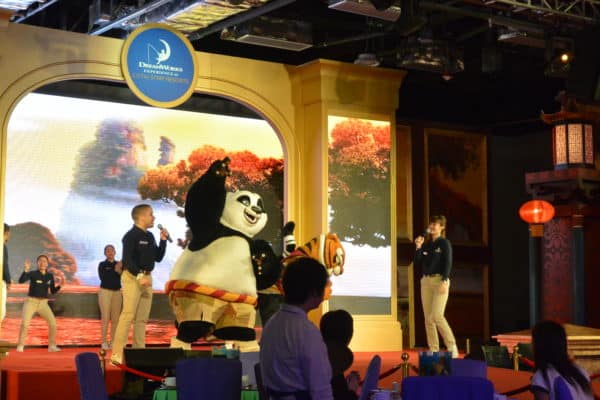
There are many family-friendly entertainment options at the Sheraton Macau Hotel. An adorable breakfast option called Shrekfest at the Sheraton was full of super cute Shrek characters, and kids could eat breakfast and run up to the stage for a picture with their favorite character. Not going to lie, even us other kids took some pictures. And I might have been forced to start my dancing earlier that day with a cuddly, big panda bear. (No, there are no photos to document that.) The Sheraton also has some cute accommodations options for kids, which I’ll tell you more about in my Macau accommodations post.
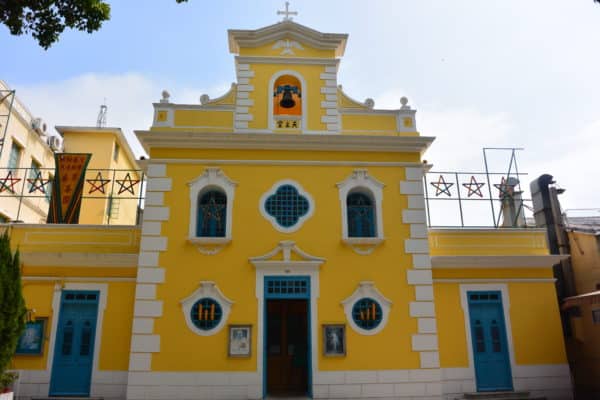
Taipa & Coloane
Taipa and Coloane are Macau’s two islands that were originally small fishing villages. Both of these islands are pockets of beautiful architecture and heritage. They are beginning to grow rapidly along with Cotai.
Coloane Village stands as a living testament to Macau’s shared Portuguese and Cantonese heritage. There’s a beautiful square in the middle of the village, complete with water views as well. There’s a baroque-style church called the Chapel of St. Francis Xavier in the center of town standing behind a monument commemorating the local victory over pirates in 1910.
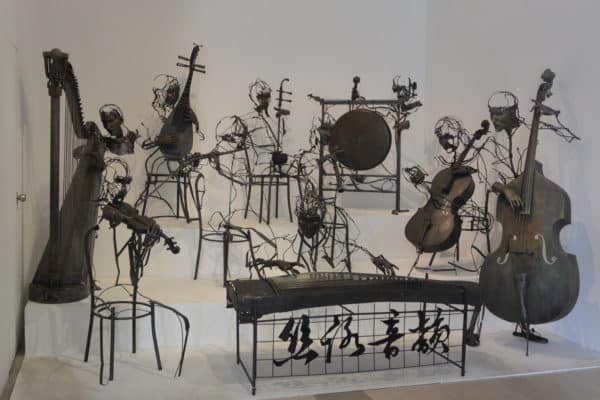
Visit Taipa during the day and take 30 minutes or so to wonder through the Taipa Houses Museum. It’s a row of five green and white buildings (previously residences of wealthy Macanese families) filled with reproduction period furniture in both Chinese and European styles. It takes very little time to walk through and it’s free. Exhibits change frequently (and certain houses were closed for construction) but I saw some beautiful costumes and musical instruments from Portugal.
Where to Stay
Sheraton Macau Hotel: It’s the largest Sheraton in the world with spacious rooms! This hotel has a unique spa where they analyze how you are feeling at the moment before your massage and use your zodiac sign to determine the oil used for your massage.
Estrada do Istmo. s/n, Cotai, Macau; Tel.: (853) 2880 2000
Sofitel Macau at Ponte 16: This gorgeous French-style hotel is perfectly located near all of the culture and heritage walks in the city, which was my favorite part of my Macau experience.
Rua do Visconde Paco de Arcos, Macau; Tel.: (853) 8861 0016
Come to the islands to stroll in the fresh air, get lost in the day, and enjoy the gorgeous European architecture. And, it’s super important that you come here to EAT. More about the delicious Macanese cuisine soon!
All photos courtesy of Caitlin Martin.






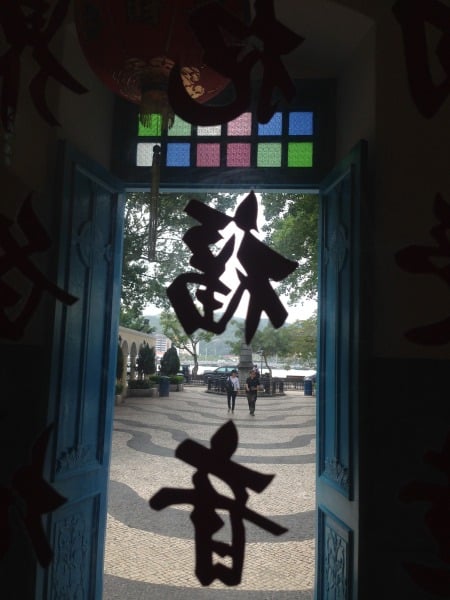

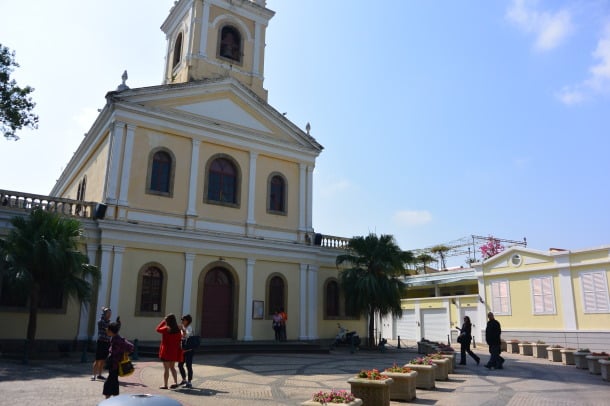






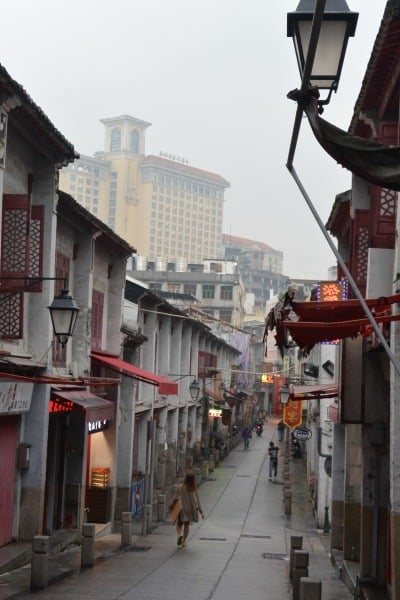
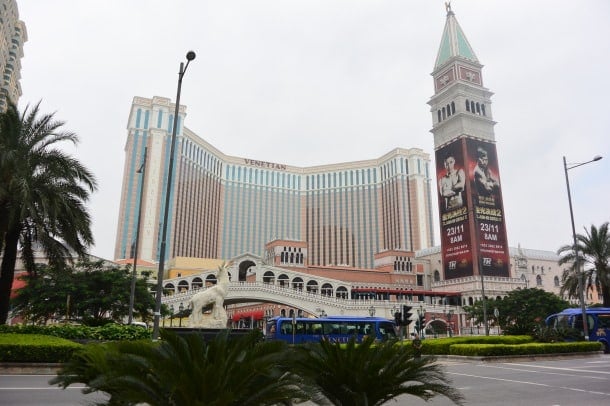









I have been a few times to Macau, usually sticking to St Pauls Church, Casinos and Eggtarts (ofcourse) Next time I should explore a bit more. Thanks!
Hi there! Yes, I promise you that historic old Macau will not disappoint. I couldn’t believe this part of Macau existed among the glitz and glam of casinos and entertainment. There are excellent self-guided walking tours of old Macau that will give you a great overview on your next visit!